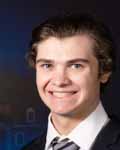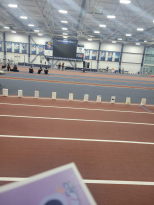A Profile on the Penn State Formula Racing Team
The Penn State Formula Racing team works to engineer a car each year in hopes of going to the Formula SAE competition held in Michigan.
The team placed 28th out of over 100 competing teams in last year’s competition.
Both engineering and non-engineering students work together to design and manufacture the car. Their goal is to create a learning environment in the workshop and involve anyone interested in being a part of the process.
“Overall, on our team, we do try to make sure even if you are not an engineering student that you can jump into maybe a more engineering-focused subsystem and still learn everything,” Lauren Waer said, a fourth-year double majoring in psychology and political science.
Waer is Outreach Lead of the team, in charge of getting the team’s name out to the public.
With seven different technical subsystems all working together to design the car, there are various levels of work to be done.
The team could not give an estimate on how many hours they spend each year on working on the car, as there are members in the workshop for most hours of the day.
There is a higher concentration of people working on the car during the spring to prepare for competition.
The nine-total subsystems, two considered not technical, must integrate well in order to make sure the car runs smoothly.
Nate Dreyer, fourth-year majoring in mechanical engineering and captain of the Formula Racing team, explained the subsystem leads meet on a weekly basis to ensure each part of the team is on the same page.
While the Formula Racing team works to integrate the subsystems, time management is a challenge they face.
“It goes into the nitty gritty of what we do, and that’s really complicated project management in a really short time, you know we don’t have much time to build this car,” Dreyer said.
Subsystem integration plays into the time management aspect of the car. Dreyer emphasizes the importance of the systems working together well to get the car done in the short time limit before competition.
Another challenge mentioned is the expenses of purchasing materials for the car. While they come up with a project schedule early on in the process, these purchases sometimes delay the manufacturing later.
Dreyer spoke about how the team can have the car at its best, but can never expect what will happen at competition.
At last year’s competition Dreyer said the team did not know about a specific event to complete.
“None of us knew what we were getting into to the point in which we had an event that we didn’t know existed. There’s a cost event where we have to present our costs and that side of it to a panel of judges, how we purchased everything and saved money and how we prioritized it.”
The team is currently working on “PSR23,” which will be their first car designed with an electrical engine.
“The team is in the middle of the purchasing process of the car,” Dreyer said.
“Historically, we have always run an internal combustion car, but this year we’re making a really exciting change and put a lot of effort towards making it electric, fully electric,” Becca Baker said, a fourth-year majoring in nuclear engineering.
“I also want to give a huge shoutout to our electronic subsystems both high voltage and low voltage. They are essentially making our power trains from scratch. We’ve never done an electric car before, this has been a few years of research…,” Baker said.
Baker is a current member of outreach on the team, and she is a former lead in the Controls, Brakes and Safety subsystem.
In previous years, the Formula Racing team has only designed cars with an internal combustion engine.
Cassie Baylis is a third-year majoring in broadcast journalism. To contact her, email ceb6085@psu.edu.








